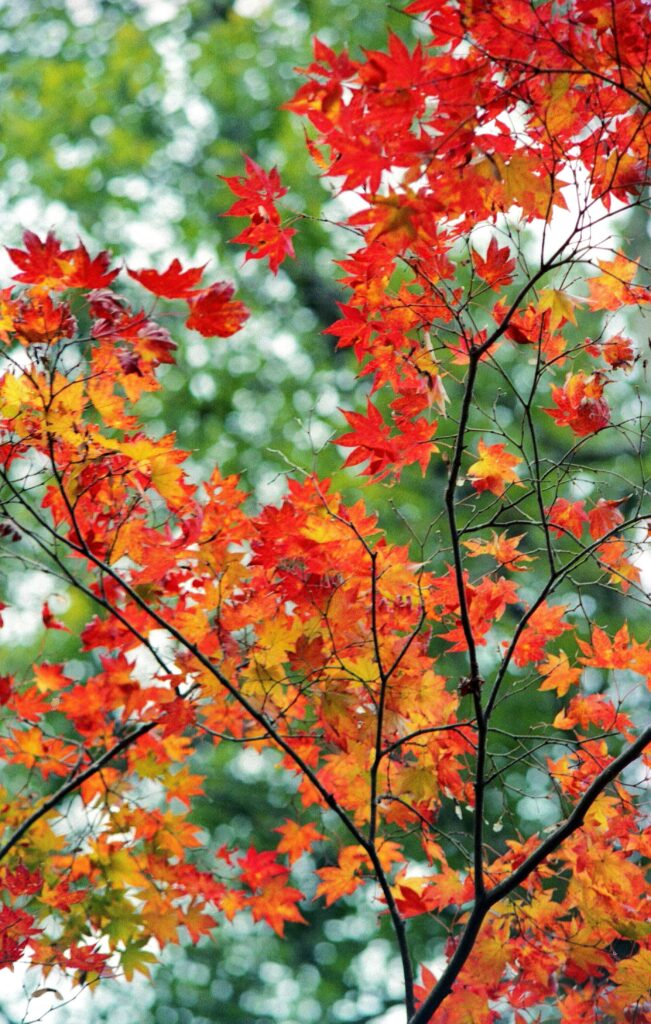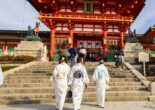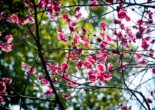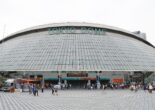Mount Takao is not only the tallest mountain easily accessible from Tokyo. It is also home to temples and shrines, and the mythical tengu, the long-nosed accountants of the gods. And a funicular, and a monkey park. Read more here.
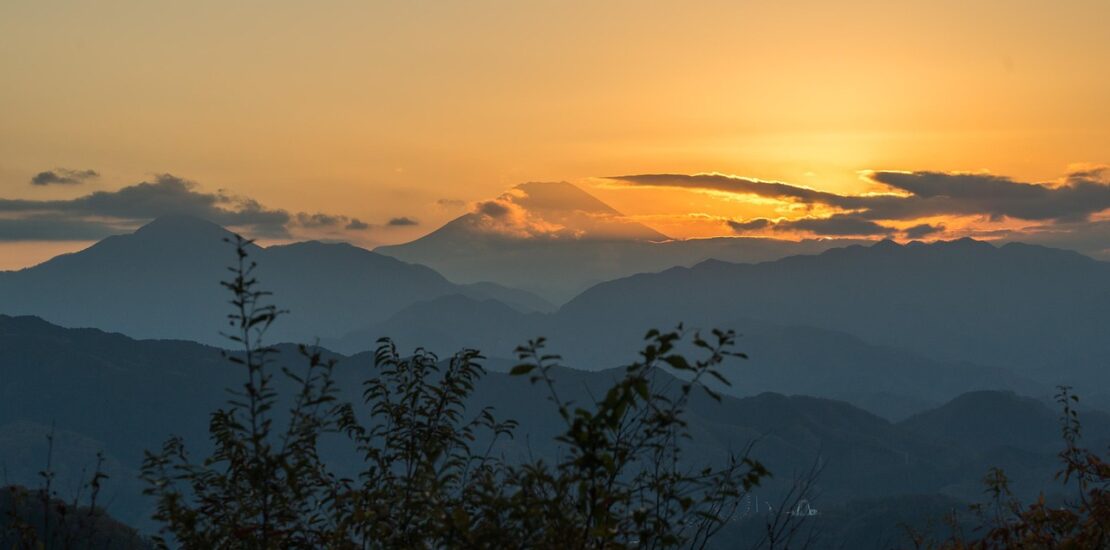
Tokyo, you might have thought, is s huge urbanization. Houses everywhere, with busy roads and supermarkets, schools, and game centers.
But Tokyo, the prefecture, is not the same thing as Tokyo the city. While the city may feel like a huge concrete jungle, there are huge unbroken swaths of nature in the northern and western parts of the province. As a matter of fact, you can walk (there are no roads) from Mount Takao in the northwest of Tokyo prefecture in a straight line all the way to Osaka without encountering any human dwellings.
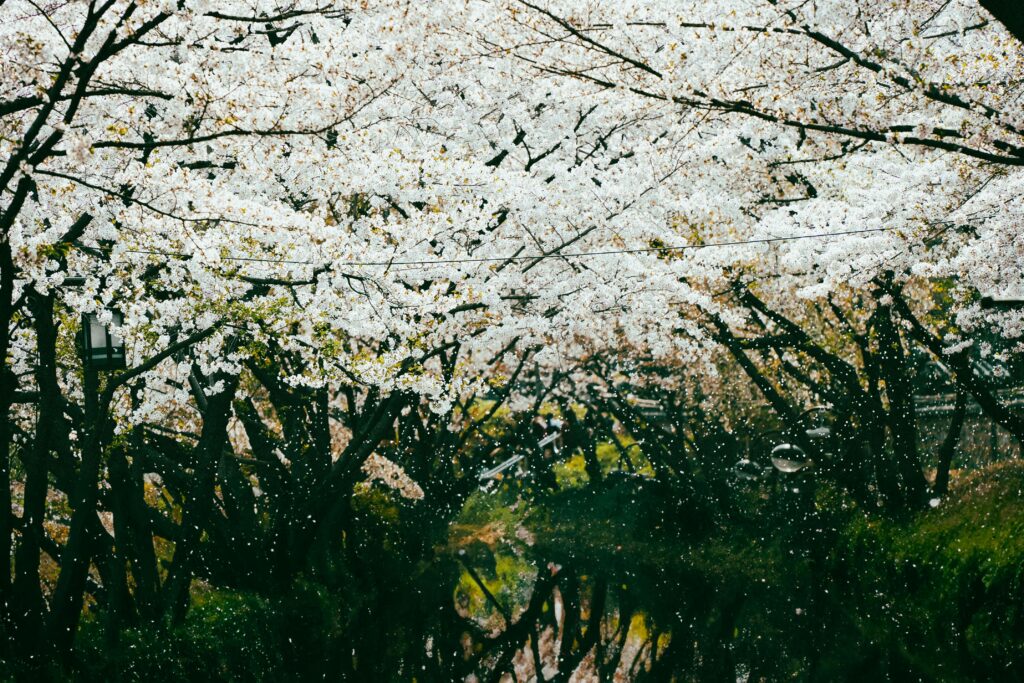
The mountain stands only 599 meters above the sea, which still means you have to get a little more than 500 meters up in the air from the Takaosanguchi railway station, on the Keio line.
Takaosanguchi (高尾山口) literally translates as ”the gateway to Mount Takao”, and the area between the railway station and the cable car station is a little village in its own right. It is here you will find the ”599 Museum” showcasing the nature and culture of mt Takao, including several rare plants and birds which use the biotopes created by the elevation above the Kanto plain.
The Treat Behind the Takaosanguchi Station
But the biggest treat is just behind the railway station. This is the location of the Takaosan Onsen Gokurakuyu (高尾山温泉極楽湯), a hot spring bath fed by a natural hot spring. Tokyo has many public baths, but even those fed by natural hot water take it from wells deep underground. Here, the water from the hot spring comes directly out of the ground and is fed into the public baths.
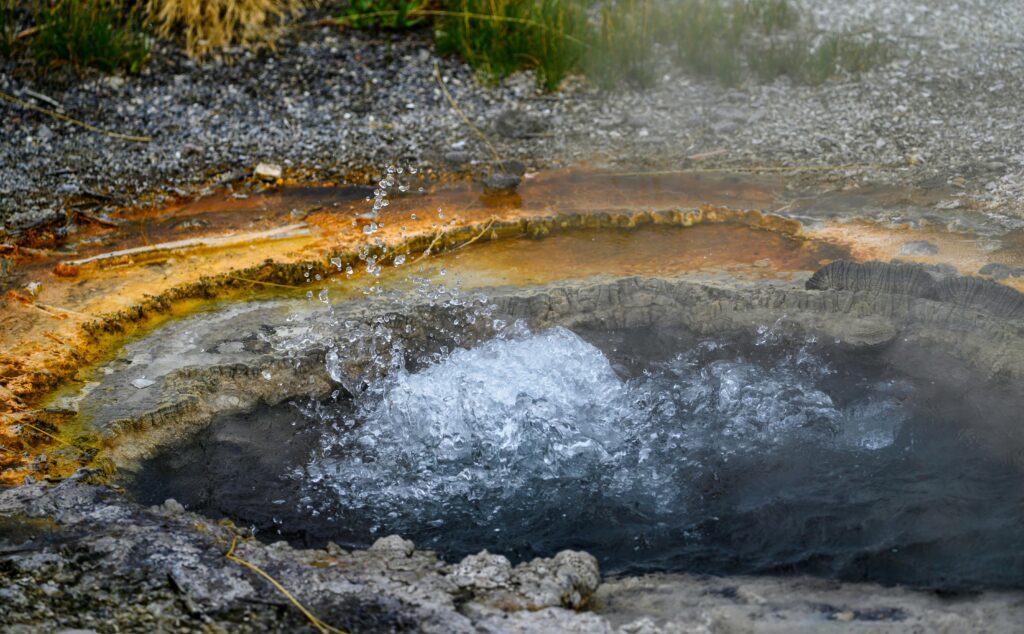
There are several baths in the separate men’s and women’s departments, and as usual, the rotenburo (outdoor bath) will provide an extra relaxing experience, with your body in the hot water and your head in the cold air.
From the Takaosanguchi station, you need to make your way to the top of the mountain. That is one reason for saving your onsen experience for when you are coming down — otherwise, you might get stuck there and never bother to climb the mountain. You are so relaxed.
Alternatives to Walking in Mt. Takao
There are several ways to get to the top of Mt Takao from the Takaosanguchi area. You can walk — the trail is paved most of the way — but there is both a chair lift and a cable car that will take you to the top of the mountain. Once you get there, there are several walking trails around the top of the mountain.
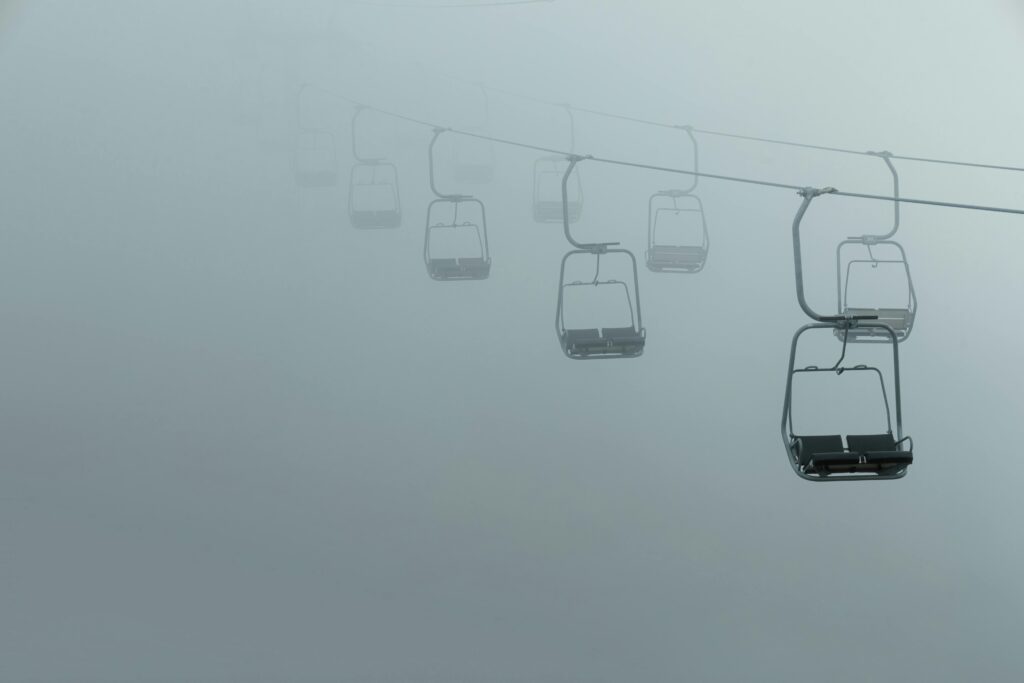
The chair lift is less fun when it rains, and operation will also stop in winter. The cable car is a much more interesting ride, and has the added advantage that the road leading up to the cable car station from the railway station is lined with restaurants and small bakeries selling ”mandju”, the Japanese steamed buns filled with sweet bean jam. They taste much better when fresh, so buy some and bring them up to the top of the mountain.
Short Walk to the Summit
The chair lift and the cable car both terminate some distance from the actual summit, with a few restaurants for those who want to enjoy a meal with a view. As you walk there, you will pass a small monkey park, where you can observe Japanese macaques. There are thick glass walls between the animals and the watchers, making it safe.
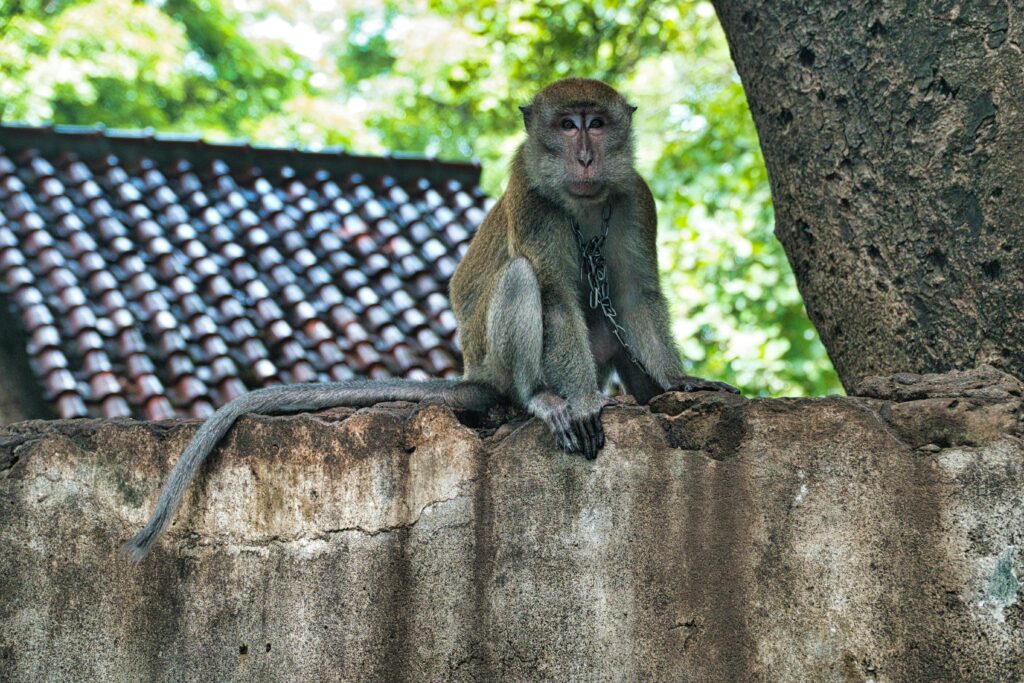
These monkeys are both social and intelligent, and smart enough to stay away from humans when out in nature. Monkeys roaming the city streets make the news at least a couple of times per year, as humans continue to encroach on wildlife habitats. These are the same kind of monkeys that bathe in hot springs in winter, although here there are no hot springs. And Tokyo hardly has a proper winter either, although Mt Takao actually is tall enough to receive significantly more snowfall than the plains below.
Monkeys are Better at Zoos
If you have never seen the monkeys and do not plan to make a visit to a zoo (there are several in Tokyo apart from the most famous, Ueno zoo), then you should make the monkey park a part of your itinerary. Otherwise, you can skip it. All zoos will have them on exhibition, usually in much better enclosures.
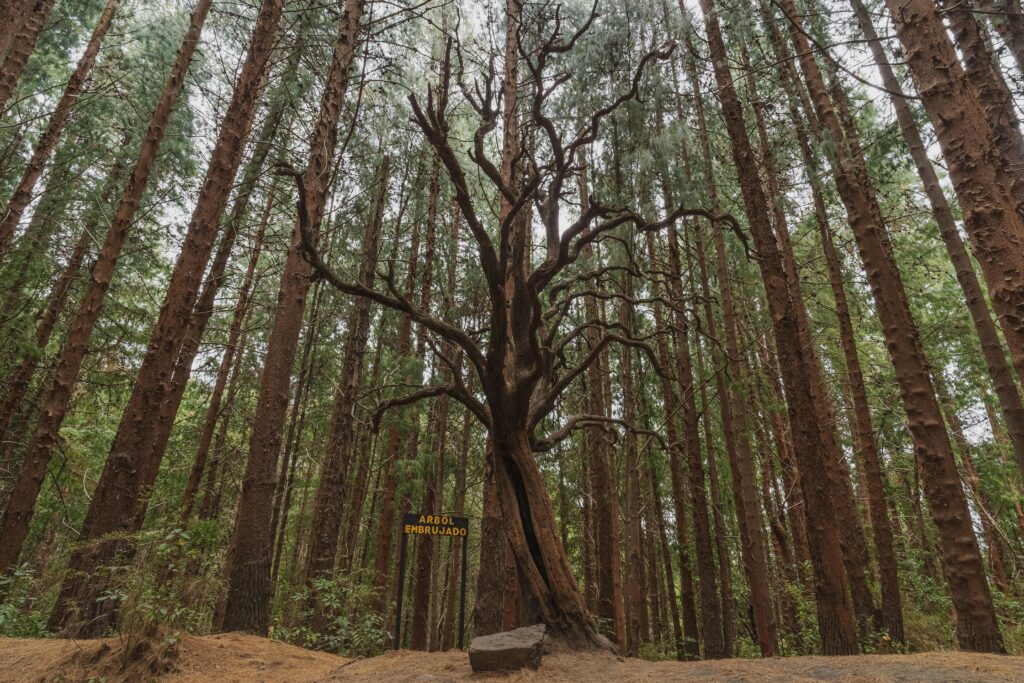
The trails go beneath a row of magnificent cedar trees. The trail here is gravelled, so if you have walking difficulties or are in a wheelchair, it may be hard for you, even if it is not particularly steep. These are planted as an avenue leading up to the Yakuoin temple, a Buddhist temple, but with a huge Shinto shrine in the front. Unusual for a Shinto shrine, it is dedicated to the tengu.
Tengu Watch the Mountain
They are winged, humorless, and meticulous magical beings with long red noses or crow’s beaks, often known as the bookkeepers of the gods. In Japanese folklore, they have a prominent position as part of the yokai, beings associated with the land of Japan.
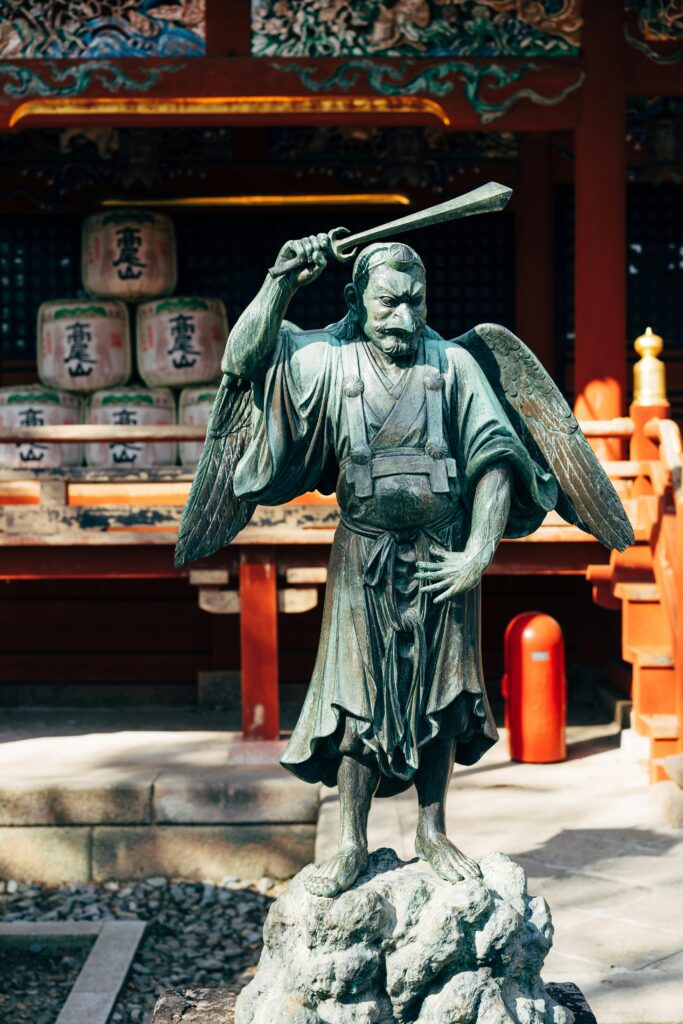
You only need to watch the GeGeGe Kitaro anime series to encounter the many different kinds of spiritual beings that constitute the yokai.
They have given their name to several restaurant chains, so even if you do not watch anime or read manga, you may already have encountered them.
The temple is worth a visit as well as the shrine; if you are lucky and arrive at lunchtime, you may be able to catch a real temple meal with the monks — but tickets run out extremely fast.
Fall colors are a Mt. Takao favorite.
Continue the trail past the temple, and you come to an area which is covered with cherry trees, blossoming a couple of weeks later than the trees at lower elevations. There are several different varieties here too, perfect if you want to see the different nuances of pink and white that cherry trees can come in. Beware, however, that you will not be the only one doing it. In season (which does mean cherry blossom season in spring, and fall color season in autumn), the mountain will be crowded with visitors. It is better to go on a weekday during high season, but this is in no way a guarantee for open paths and mountainous solitude either.
Stay tuned for more exciting content like this! Follow us on our social media platforms and check out our blog regularly to stay updated on the latest news, trends, and insider stories from Japan. Don’t miss out on future updates—sign up for our newsletter for exclusive content delivered straight to your inbox!
Related Articles
Warning: Undefined array key "sfsi_threadsIcon_order" in /home/veremosglobal/tokyoroomfinder.com/public_html/blog/wp-content/plugins/ultimate-social-media-icons/libs/controllers/sfsi_frontpopUp.php on line 165
Warning: Undefined array key "sfsi_blueskyIcon_order" in /home/veremosglobal/tokyoroomfinder.com/public_html/blog/wp-content/plugins/ultimate-social-media-icons/libs/controllers/sfsi_frontpopUp.php on line 170
Warning: Undefined array key "sfsi_bluesky_display" in /home/veremosglobal/tokyoroomfinder.com/public_html/blog/wp-content/plugins/ultimate-social-media-icons/libs/controllers/sfsi_frontpopUp.php on line 266

